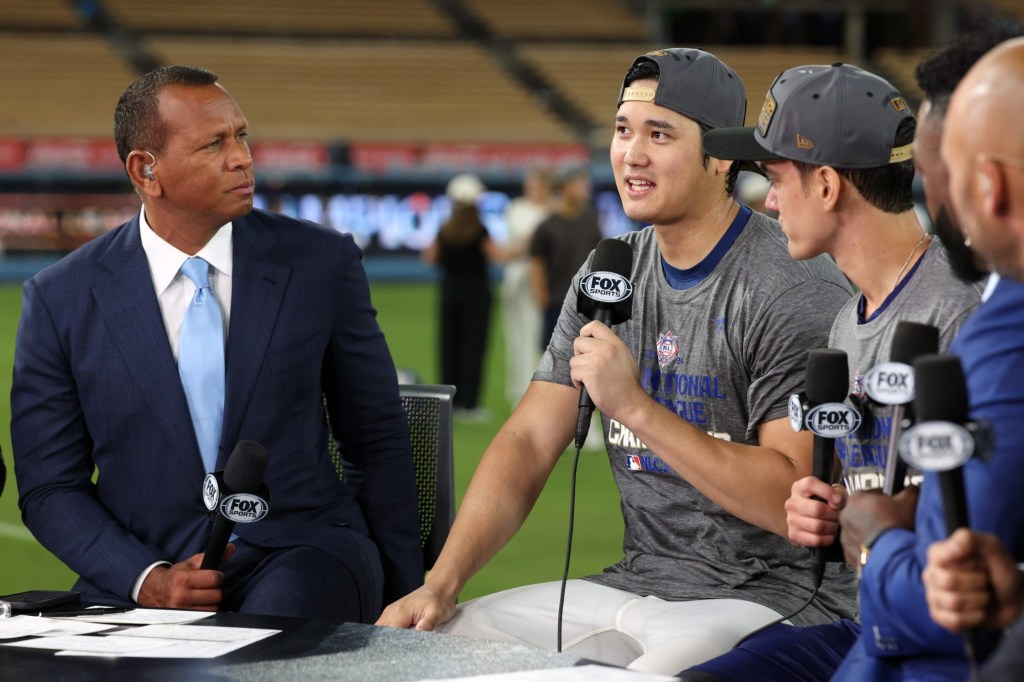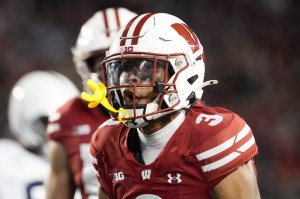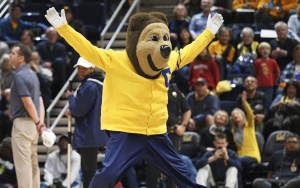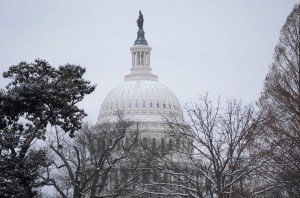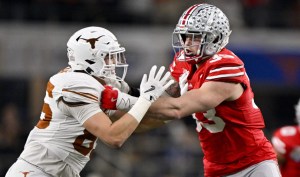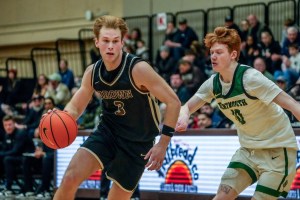Much like the rest of the world, athletic directors are dealing with unprecedented uncertainty, with their students and their revenue streams top of mind.
But while the assumption may be that athletic departments with bigger budgets, more cash on hand and reserves to tap into might be better suited to survive the coronavirus financial fallout, a number of athletic directors at all levels, from FCS and mid-major schools to Group of and Power Five institutions, actually believe the opposite.
“Look, to be honest with you, we’ve got to do some serious belt-tightening,” a Power Five athletic director told Front Office Sports. “Our profit margin isn’t that big at the end of the day – we’re talking a few million dollars – so we’re always conscious of what we’re spending and what we’re bringing in – but with an operating budget of $100-110 million we’re working with every year, there’s no way every single dollar is being utilized in the most efficient and effective ways.”
The schools that are experts at ensuring they’re extracting maximum value from each dollar aren’t always the Group of Five or Power Five programs. The consensus among the dozen athletic directors FOS spoke to was that institutions operating with much thinner margins and smaller budgets were perhaps better positioned.
“We’re always looking at efficiencies, and we’re always looking at [if] we have any redundancies that we can eliminate,” an FCS athletic director said. “The examination of the key components of the department happens on a more frequent basis at a school like ours and a lot of other FCS type schools than it would in some of the big FBS’s. I think we’re more in tune with what we can do without because we absolutely have to get the most return on every dollar we spend because we just don’t have a lot of dollars to spend.”
In an analysis of 2018 financial reports, the NCAA found that expenses outpaced generated revenues at every FCS institution, meaning their schools subsidized at least a portion of the athletics budget at every school across the FCS. Those subsidies ranged from $2 million to over $46 million, with a median of $13.9 million.
But because they are dependent upon the dollars of other departments, the athletic directors FOS spoke with who rely on institutional support resoundingly agreed that they’re more conscious about where they spend and what they spend on.
And while they’re wary that school-funded revenue streams could be impacted somewhat if fewer students choose to attend college on campus versus online after all of this is over, or if online learning continues on for an additional semester, there’s still a consensus that they are already better equipped to respond.
“If we’re starting to see undergraduate populations dwindle or the net tuition revenue per student is not as strong as it was before this crisis, then obviously there’s going to be a trickle-down effect of funding for not just being able to run your athletic programs, but how you maintain your buildings, provide the auxiliary services and all those other things we depend upon,” the aforementioned FCS AD said. “But again, these are questions we’re already always asking.”
Institutional support also provides smaller schools some financial stability that self-sufficient and independent departments at larger athletic institutions aren’t afforded. While the NCAA distribution might have a more significant impact on revenue at the FCS and mid-major level in terms of what they generate on their own, those same schools, in many cases, aren’t generating the majority of their operating budgets to begin with.
READ MORE: Athletic Directors Wary of Financial Futures Amid Revenue Stream Uncertainty
“The impact of the NCAA distribution, that piece of it’s a greater impact for us,” a mid-major athletic director, who gets 75% of his annual budget from his institution, said. “Now, the flip is also true. We basically create a [few] million, whereas at, say, the University of Kentucky, you’re $152 million and completely 100% self-sufficient. You’re not getting any institutional money; you’re not getting any student fees, you’re getting none of that. So their impact from a sponsor, season ticket, sales, and donor perspective is exponentially more magnified.”
Not only those already predisposed to financial pressures are now considering where they can squeeze. The questions being considered today are just more foreign to some departments than others.
“Some could say we’re going to get hit harder because we’re working with fewer dollars, so the impact of any reduction is going to feel bigger,” another mid-major athletic director, with an annual operating budget around $20 million, said. “But at the end of the day, we’re used to working with the minimum.”
All qualify their confidence in their ability to respond to the situation; however, with an understanding, none are anticipating escaping the current climate unscathed. It’s about preparedness more so than actual fiscal impact.
“There’s this idea that NCAA and conference distributions make up all of our budgets and while they may make up more than at a Texas or Oregon or Alabama, for most of our peers, it’s still not 40 or 50% in total,” a mid-major AD said. “For us, it’s less than 5% from NCAA and a much smaller conference distribution than say the SEC. So a lot of us are still going to lose the same amount of money proportionally as the larger athletic departments, but we feel that we’re already prepared to respond because our response will look pretty similar to our regular reflectiveness.”
Zach Maurides, CEO and founder of Teamworks, observed something similar in the results of a joint survey of more than 100 FBS athletic directors his company conducted with the Lead1 Association. The results showed that many larger athletic departments will have to start engaging in these same sorts of efficiency examination processes that smaller schools already do to survive this crisis financially.
“A lot of departments that have had many years of just nothing but increasing revenues, for the very first time, they’re actually being asked to function like businesses whereas when you grow, you should have greater efficiency, you should see greater productivity from the existing resources,” Maurides said.
The aspect of a business mentality is what may serve as a saving grace for smaller schools.
“We’ve always been extremely frugal in how we’ve operated,” an FCS athletic director said. “And I think that served us well as we’re going through this and looking at what options to take. If you were to take a look at what we pay our coaches, we’re well behind the market. But that’s now actually going to help us a little bit. There’s this real understanding of being very conscious of where every dollar is spent, I think is going to help us move through this and potentially come out in a position of strength.”
Being behind the market doesn’t typically work for Group of Five and Power Five schools trying to recruit the best coaches to build nationally recognized programs. Average compensation for Division I football coaches was $1.75 million in 2015 – an increase of 75% since 2007 – and is even higher today, with hundreds of thousands of additional dollars available in bonus money.
The exponential growth in coaching salaries has increasingly been discussed as NCAA, conference and institutional finances have come under scrutiny amid the ongoing student-athlete compensation conversation, as have the enormous sums spent on capital projects and facility renovations at large institutions.
READ MORE: Spring Sport Athletes Face Complicated Decisions as NCAA Extends Eligibility
Those habits could hurt more in the current climate – and not just financially.
“I think some schools who maybe have not been as frugal or who have pushed the envelope in terms of what they can spend, I think the pain is going to be more acute in those schools,” the FCS athletic director said. “There’s going to be some places where even a little bit of belt-tightening hurts badly. And here we’re used to tightening the belt every year; it’s just one of those things that our staff knows how to adapt with. And one of the biggest things is the psychological adaptation – the first time belts get tightened, there’s tension, and I don’t think we’re going to feel that the way some other schools are.”
That is not to say that every Group of Five or Power Five school, however, has pushed the envelope to excess.
“I’ve always had the notion that we’re the most economically efficient athletic program in the country,” one smaller Power Five athletic director said. “When you see what our operating budget is, it’s always one of the lowest in all the Power Five. Based on the performance of our football program over the last five years, you can argue that we’re one of the schools that gets the greatest value on what they invest. So while I would say there isn’t fat to trim [here], I think as we headed to whatever economic downturn that we’re in, we’re lucky in that our staff is used to doing more with less than having to do multiple jobs than if you’re at a bigger school.”
The key for all Power Five schools, regardless of budget, the same AD said, is going to be to “be really smart on where we can cut, because we know we’re going to have to cut.”
While bigger schools won’t be alone in making those cuts, they may be venturing into familiar more unfamiliar to them than to many of their smaller school counterparts.

